Everyone, it seems, is raving about the Mediterranean diet. Nutrition and medical professionals praise it as a way to prevent heart attacks, breast cancer, depression, Parkinson's, and Alzheimer's—not to mention its fame as a way to lose weight.
But what about the people who were following the Mediterranean diet before it was cool (or even a thing!)? The Mediterranean diet in Spain isn't the stuff of scientific journals or weight loss programs. It's simply a part of normal life.
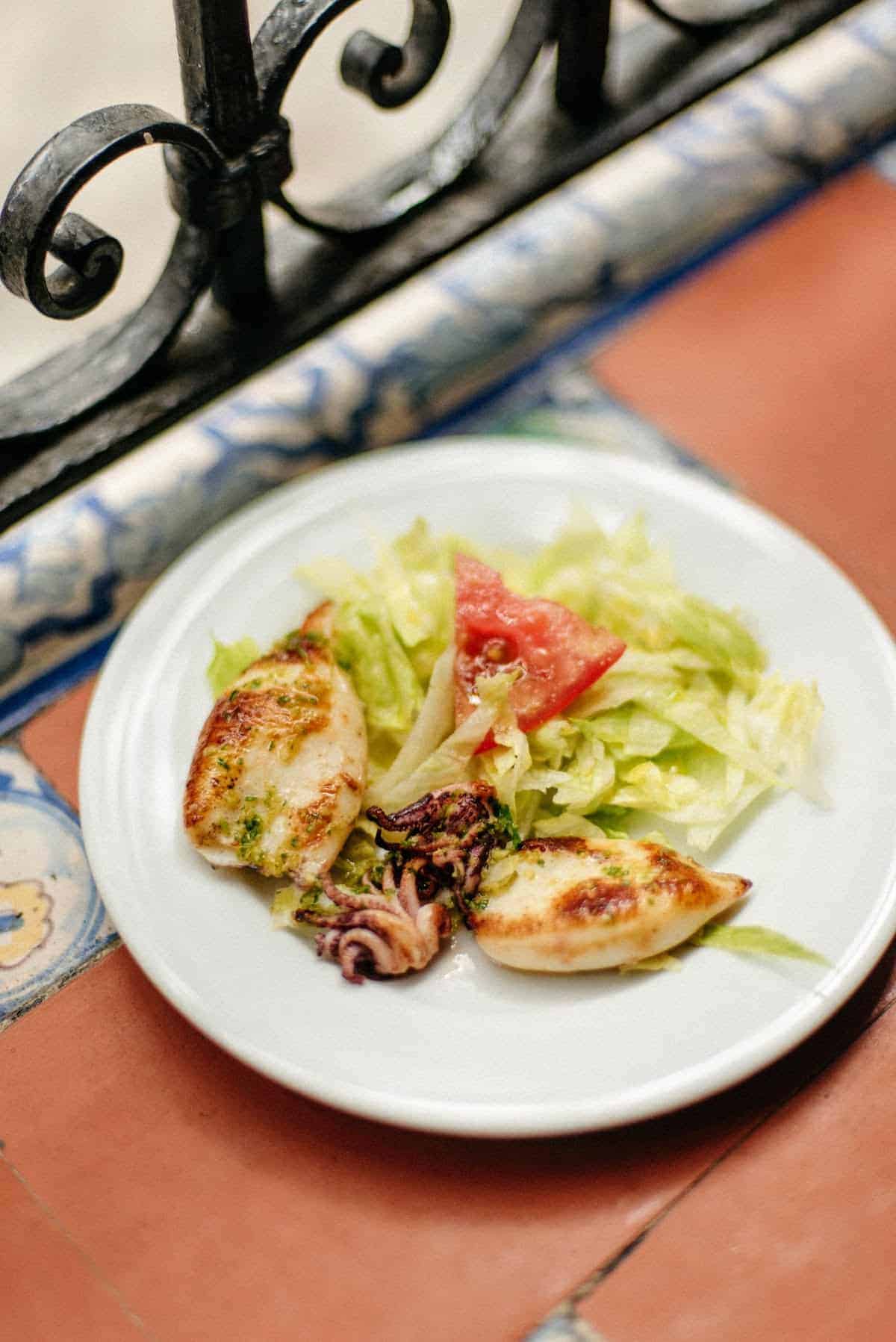
Here in Spain, olive oil is bountiful and tasty. Fresh fruits and vegetables are staples of snacks and dessert. Fish and seafood are plentiful for lunch, dinner, tapas, and more.
Following the Mediterranean diet in Spain isn't something people set out to do—it's the way generations of people were taught to eat. And while that may seem straightforward, the unwritten rules of eating in Spain are pretty extensive.
Here are a few essential staples of the Mediterranean diet in Spain. It's safe to say that all of these have played a big part in helping Spain become the world's healthiest country!
1. Extra Virgin Olive Oil
Spain produces more olive oil than any other country in the world, and the national cuisine shows it. Spaniards consume more than 11 liters of olive oil per person per year! The average American, by comparison, consumes about 1 liter per year.
In Spain, grocery stores have entire aisles dedicated to olive oil; recipes call for cups and cups of it; and kitchens are inoperable without it. But we're not just talking about any olive oil here—you want the good stuff.
Only virgin and extra virgin olive oils (especially the latter) provide any significant health benefits or even taste. These oils are a great source of healthy fats, vitamins, and antioxidants, and lend a lovely flavor to any dish. Regular olive oil, on the other hand, doesn't have much nutritional value or taste.
Contrary to popular belief, you can cook and even bake with extra virgin olive oil—Spanish professional chefs and home cooks do it all the time! It's arguably the most important ingredient of the Mediterranean diet in Spain.
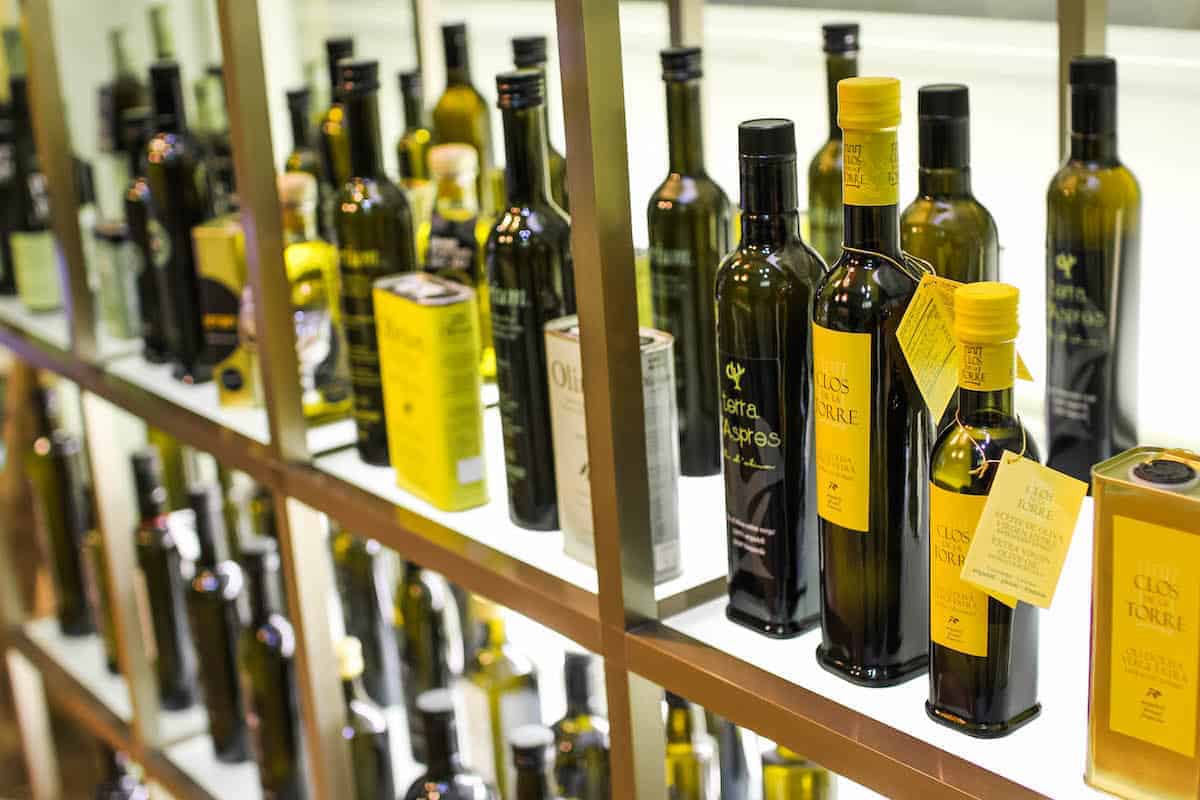
2. Red Wine
Any meal—particularly lunch—without wine is a rare sight in Spain. But you won't find people staggering back to work afterward. Spaniards tend to be slow drinkers, savoring one or two glasses of wine throughout a two-hour meal.
The Mediterranean diet's guidelines include one to two glasses of red wine per day. Scientists might say it's because of the antioxidants, but Spaniards often say wine just goes better with the meal!
Luckily, there are plenty of excellent options when it comes to Spanish wine. Reds are the most ubiquitous wines in the country, as well as the most diverse. From classics like Rioja and Ribera to lesser-known gems like Toro and Ribeira Sacra, you're spoiled for choice.

3. Whole-Grain Bread
You've just finished a spectacular dish, and the plate is smeared with scrumptious sauce. If you're in Spain, that means it's time to rebañar, or mop up all of that amazing sauce with a piece of bread.
Rebañando is a stellar way to get more whole grains. Much of the bread in Spain is unrefined and freshly baked, and it's an ever-present sight at most meals.
Healthy whole grains are one of the foundations of the Mediterranean diet in Spain. In addition to the art form that is rebañando, many Spaniards will enjoy a piece of toasted bread with extra virgin olive oil and fresh tomato (pan con tomate) for breakfast.

4. Simple Daily Exercise
This may not be food-related, but it's an important part of the healthy Mediterranean lifestyle. What people in some parts of the world would consider exercise is a fundamental part of daily life in Spain.
Consider the Spanish verb pasear, which means "to take a walk." In this case, the walk (or paseo) usually has no particular destination and is simply a way to enjoy the outdoors and move around a bit.
Young people go for a paseo and window shop, mothers take their strollers for paseos around the neighborhood, and grandparents shuffle their way around the block for their evening paseo.
Exercise, even if it's just walking from place to place throughout the day, goes hand in hand with the Mediterranean diet in Spain. Spanish cities are designed for walking, and people tend to get around mainly on foot.
As an extension of this, taking the stairs is quite common in Spain—often out of necessity. While elevators are becoming more common for accessibility reasons, many metro stations and old apartment buildings are still stairs-only. Even some streets are so steep they have stairs!

5. High-Quality Seafood
Spain's seafood selection is a thing of beauty. And thank goodness for all the variety, as fish is one of the main sources of protein in the Mediterranean diet.
This way of eating pushes red meat aside, suggesting it only be eaten once or twice per month. It recommends getting your daily protein from fish instead, which is high in omega-3 fatty acids.
Considering that Spain has nearly 5,000 kilometers of coastline, the country's love of seafood may not surprise you—but some of the offerings themselves might.
First things first: Some of the best fish in Spain comes in a can. Yes, you read that right! Spanish canned seafood often means small filets of beautiful natural fish preserved in olive oil at the peak of freshness.
Tuna is one of the most commonly used canned fish in Spain, and it's everywhere: on salads, in empanadas, mixed into pasta, and so much more. It's an easy, cheap, and delicious way to keep your heart healthy!
Yet another Spanish seafood staple is anchovies. Even if hating anchovies has been hard-wired into you, don't knock Spanish boquerones until you try them. Tender, vinegary, and perfect with a cold beer (or vermouth!) these little fish will quickly become one of your favorite foods.
Anchovies also happened to be rockstars in the Mediterranean diet in Spain. They're packed with omega-3 and omega-6 fatty acids and protein.
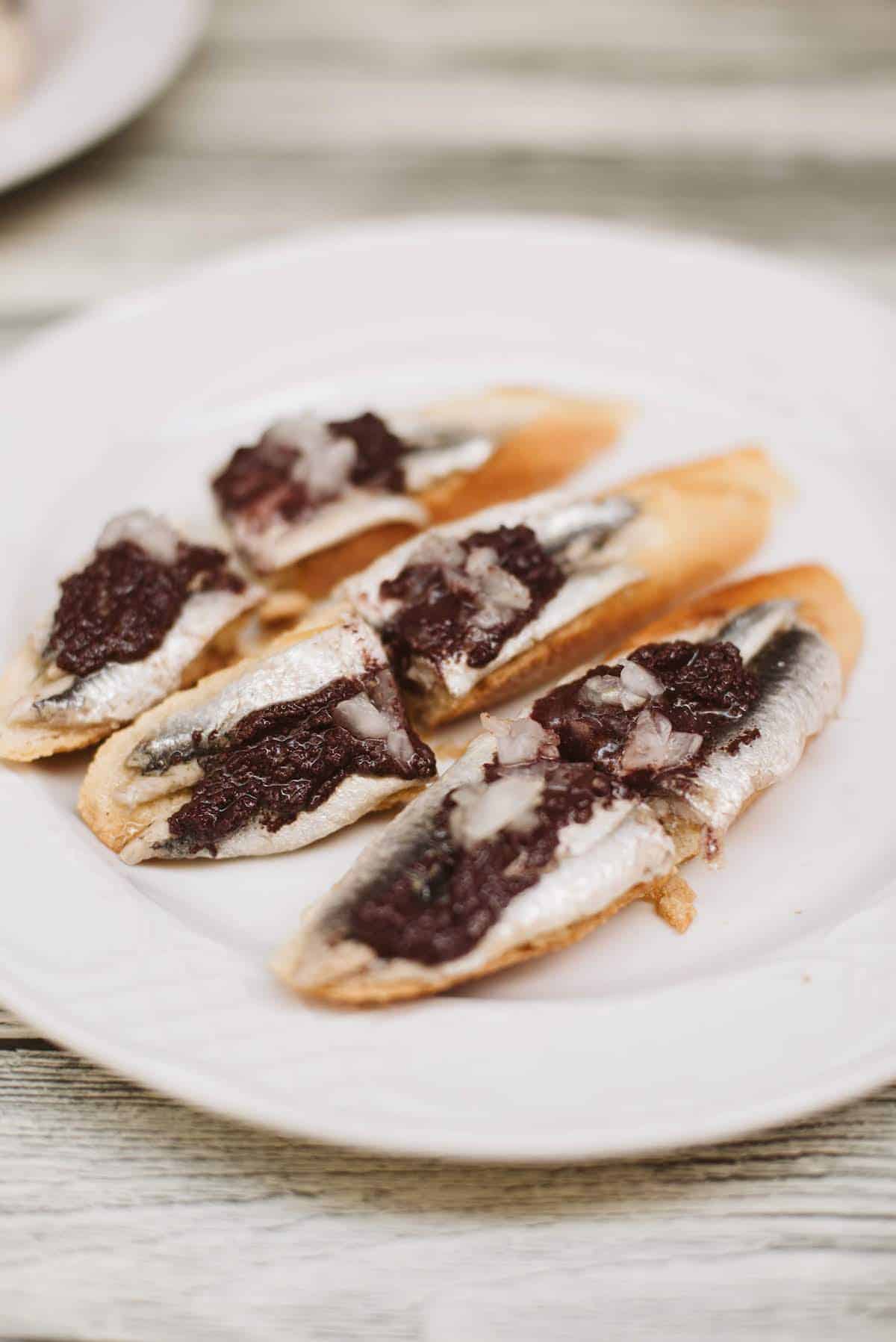
6. Fresh Fruit
One of the most common desserts in Spain is something many people may have never considered to be a sweet treat: fresh fruit.
Be it slices of orange, medallions of fresh pineapple, a thick wedge of melon, or any number of other options, many households and restaurants in Spain will offer seasonal fruit to finish off the meal. (The first time I saw a plate of sliced watermelon in a Spanish restaurant, I was amazed!)
The Mediterranean diet guidelines suggest eating around three servings of fruit per day. Thanks to its dessert status, that's an easy goal to achieve in Spain! It's also common to have fruit with breakfast and as a morning or afternoon snack.
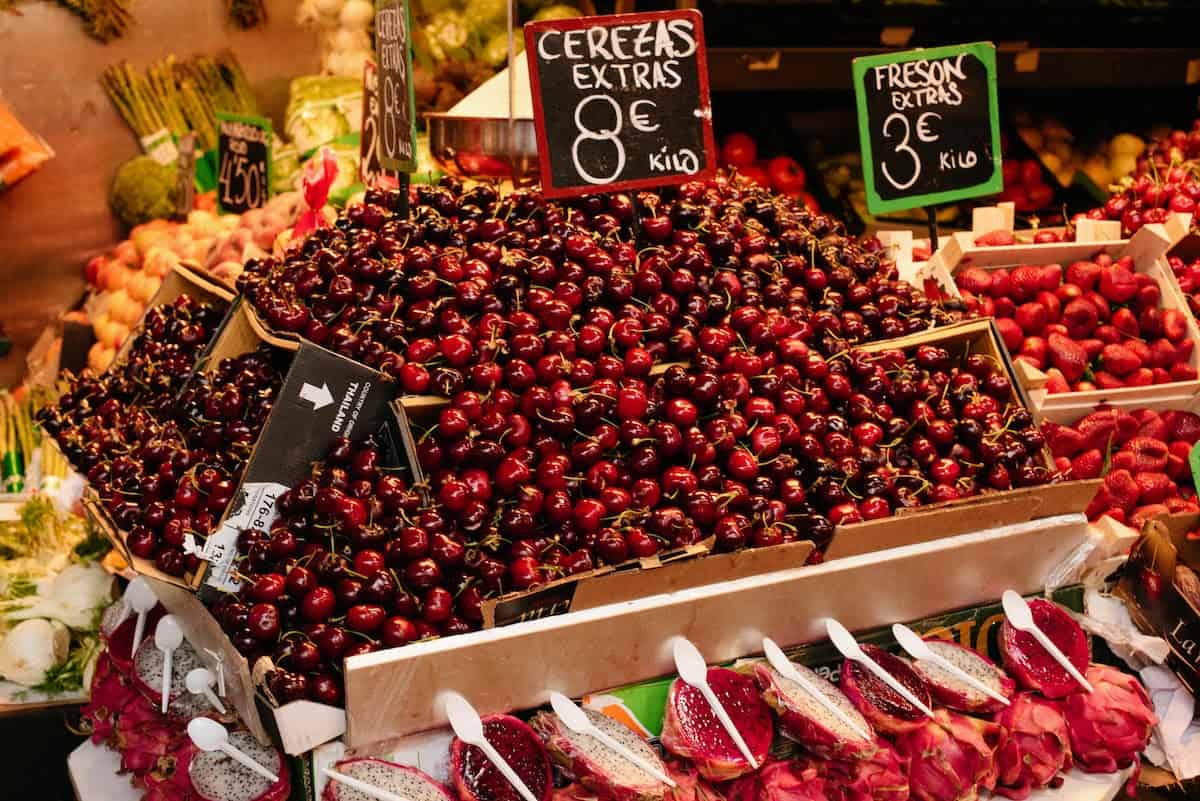
7. Fresh Vegetables
In Spanish cuisine, veggies are titans of flavor that dominate dishes at every time of day. From toast with olive oil and tomato at breakfast to a colorful ensalada mixta at lunch to a plate of bright green Padrón peppers as part of a tapas-style dinner, vegetables are ever-present.
With their high levels of vitamins and antioxidants, veggies are a prime ingredient in the Mediterranean diet in Spain. The climate throughout much of the country allows for many vegetables to be grown locally, making it easy to pack in several servings per day!
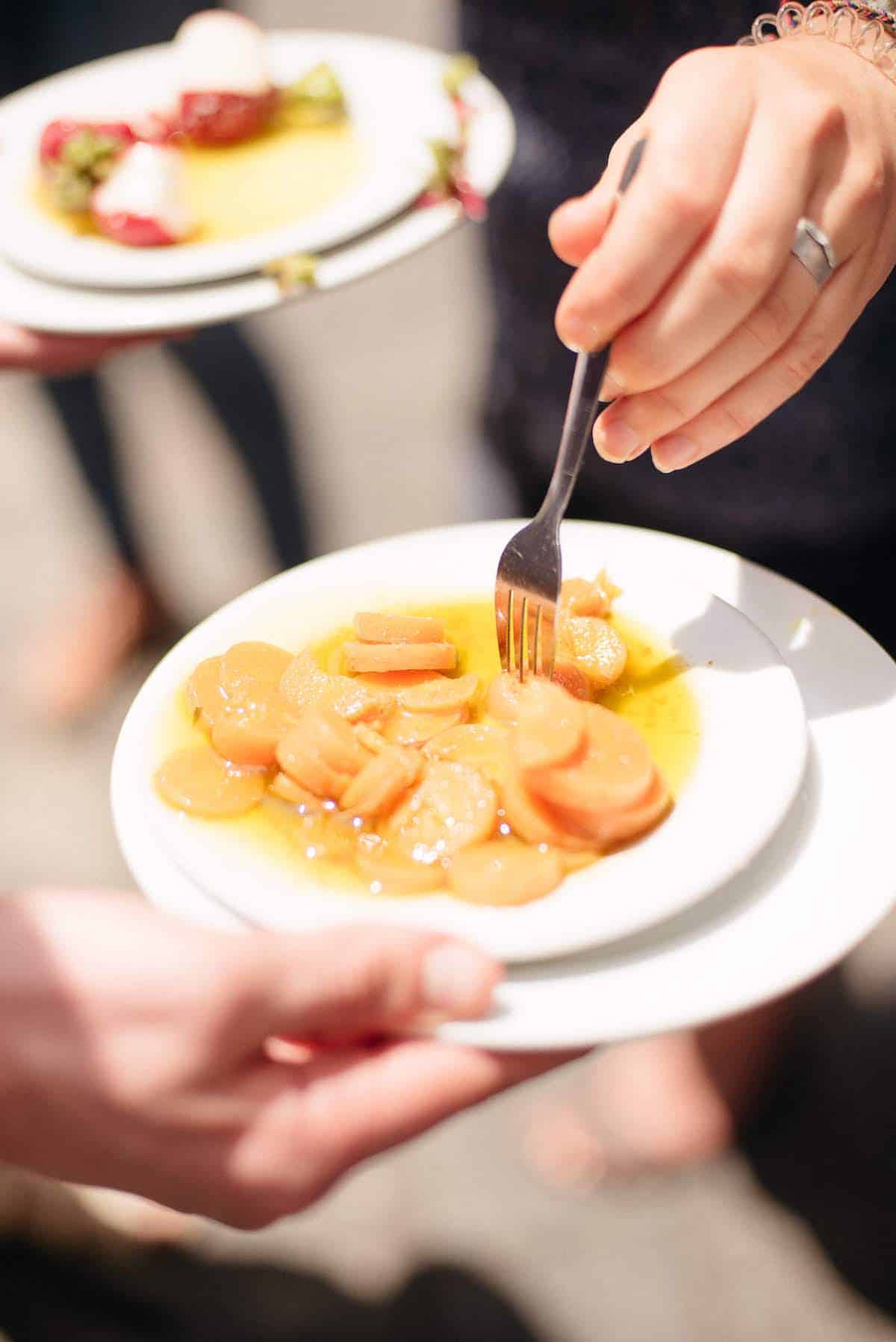
8. Paella & Other Rice Dishes
Whole grains? Check. Fresh vegetables? Check. Seafood and/or poultry? Check. Olive oil? Big check. You'll find all of this in Spanish rice dishes.
This may just be the perfect food per Mediterranean diet guidelines, which recommend including each of those ingredients in your daily meals.
In Spain, paella and other Spanish rice dishes are hugely popular lunch foods. Whether it's a traditional paella for a Sunday family meal or a plate of seasoned rice with chicken and vegetables for a mid-week lunch at the office, this nutrient-packed dish is a regular fixture on Spanish menus.
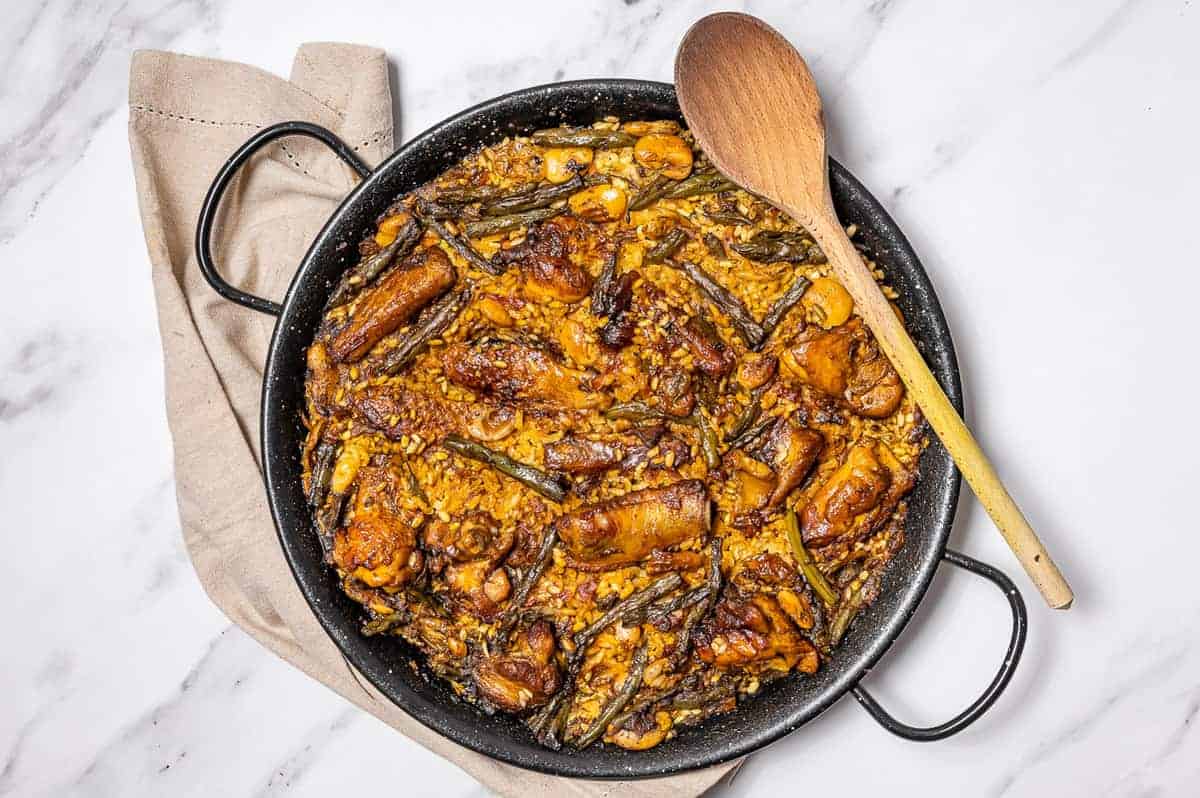
Top Mediterranean Diet-Friendly Spanish Recipes
Salads & Vegetables
- Tuna Belly, Blood Orange, & Avocado Salad
- Winter Salad with Orange & Pomegranate
- Spanish Lentil Salad
- Ensalada Mixta (Spanish Mixed Salad)
- Zanahorias Aliñadas (Marinated Carrots)
- Padrón Peppers
- Mediterranean Roasted Vegetables
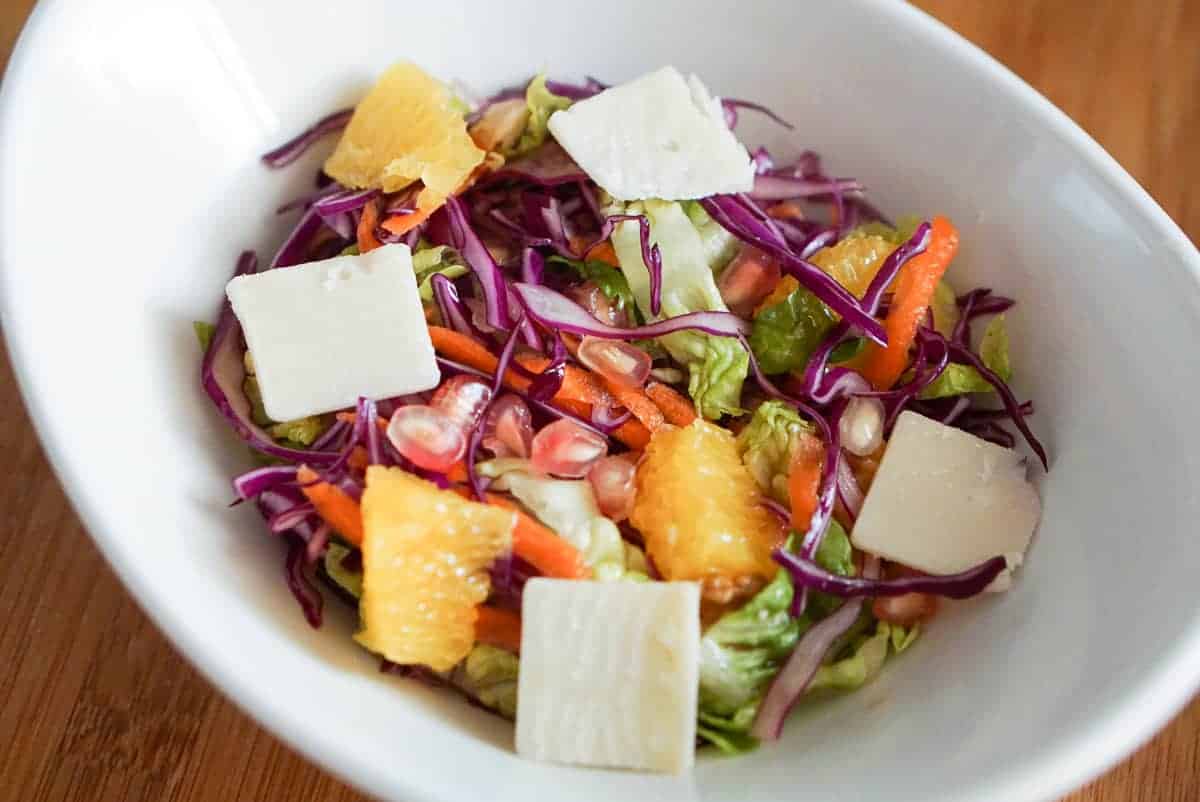
Cold Soups
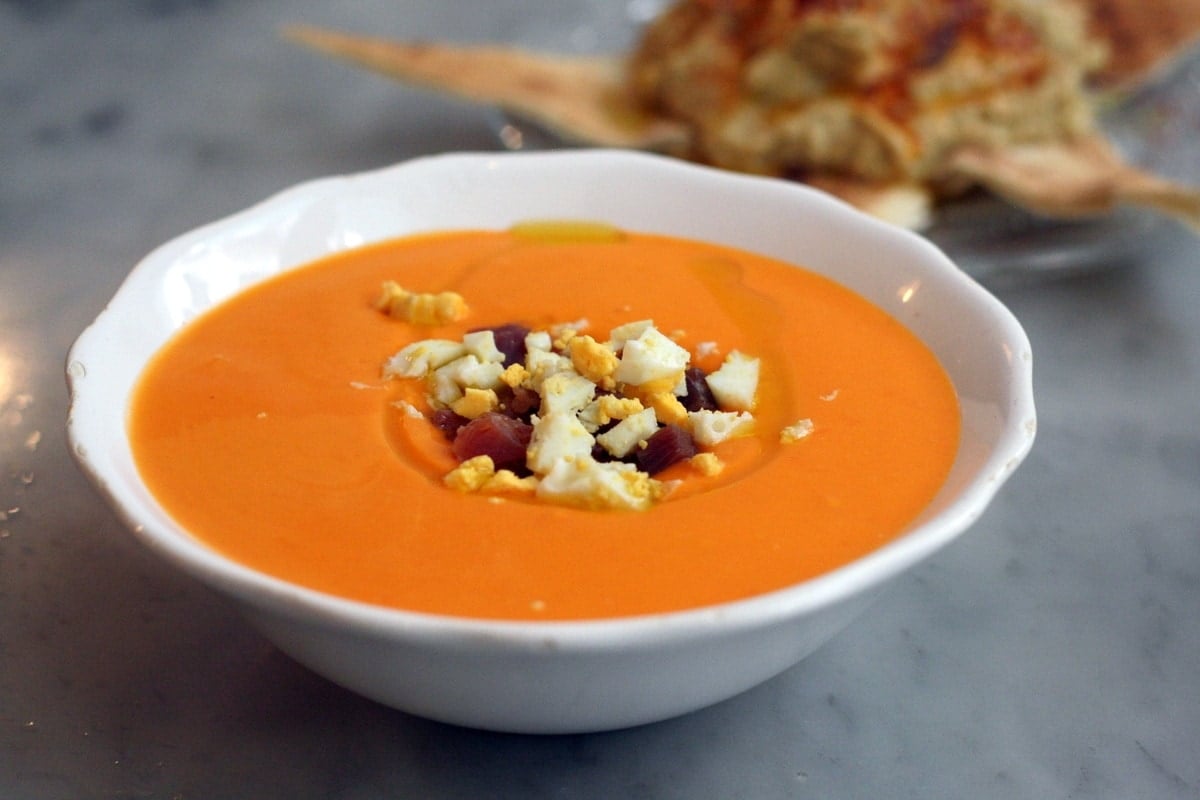
Fish & Seafood
- Tuna Empanada
- Boquerones en Vinagre (Marinated Anchovies)
- Tuna Pasta
- Marmitako (Basque Tuna Stew)
- Boiled Shrimp
- Baked Gilt Head Bream
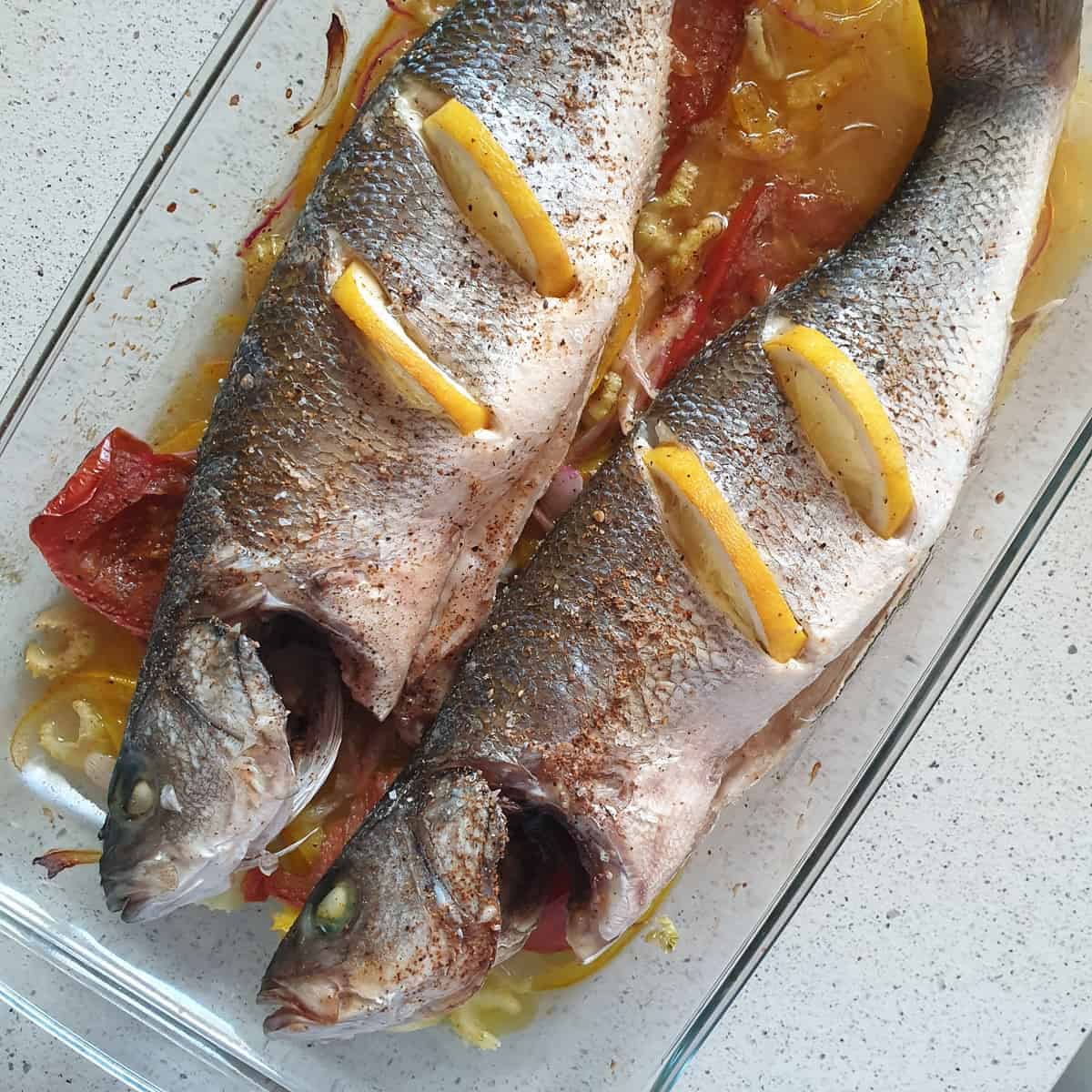
Rice Dishes
- Murcian-Style Vegetable Paella
- Authentic Paella Valenciana
- Seafood Paella
- Arroz Negro (Black Paella)
- Soupy Seafood Rice
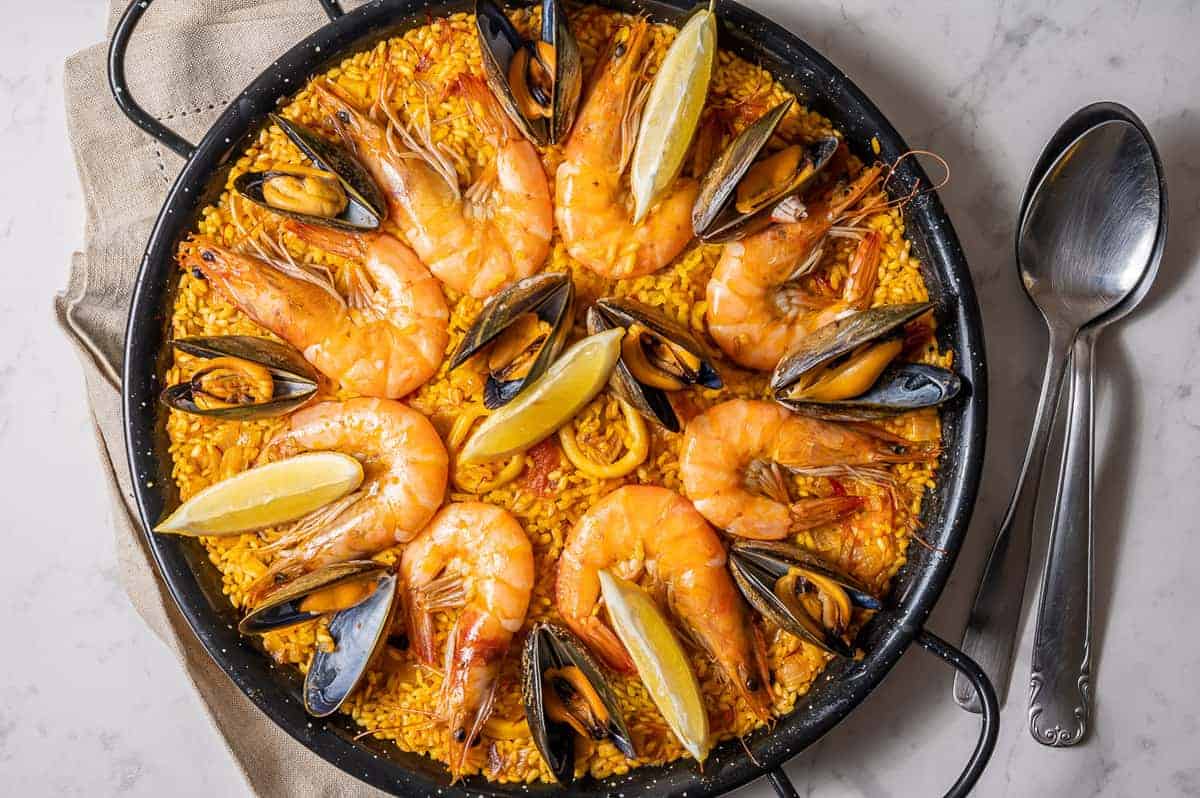
Chicken Dishes
- Spanish Roast Chicken
- Pollo al Chilindrón (Chicken & Pepper Stew)
- Pollo en Pepitoria (Chicken in Almond Sauce)
- Chicken with Mushrooms
- Chicken in White Wine & Garlic Sauce
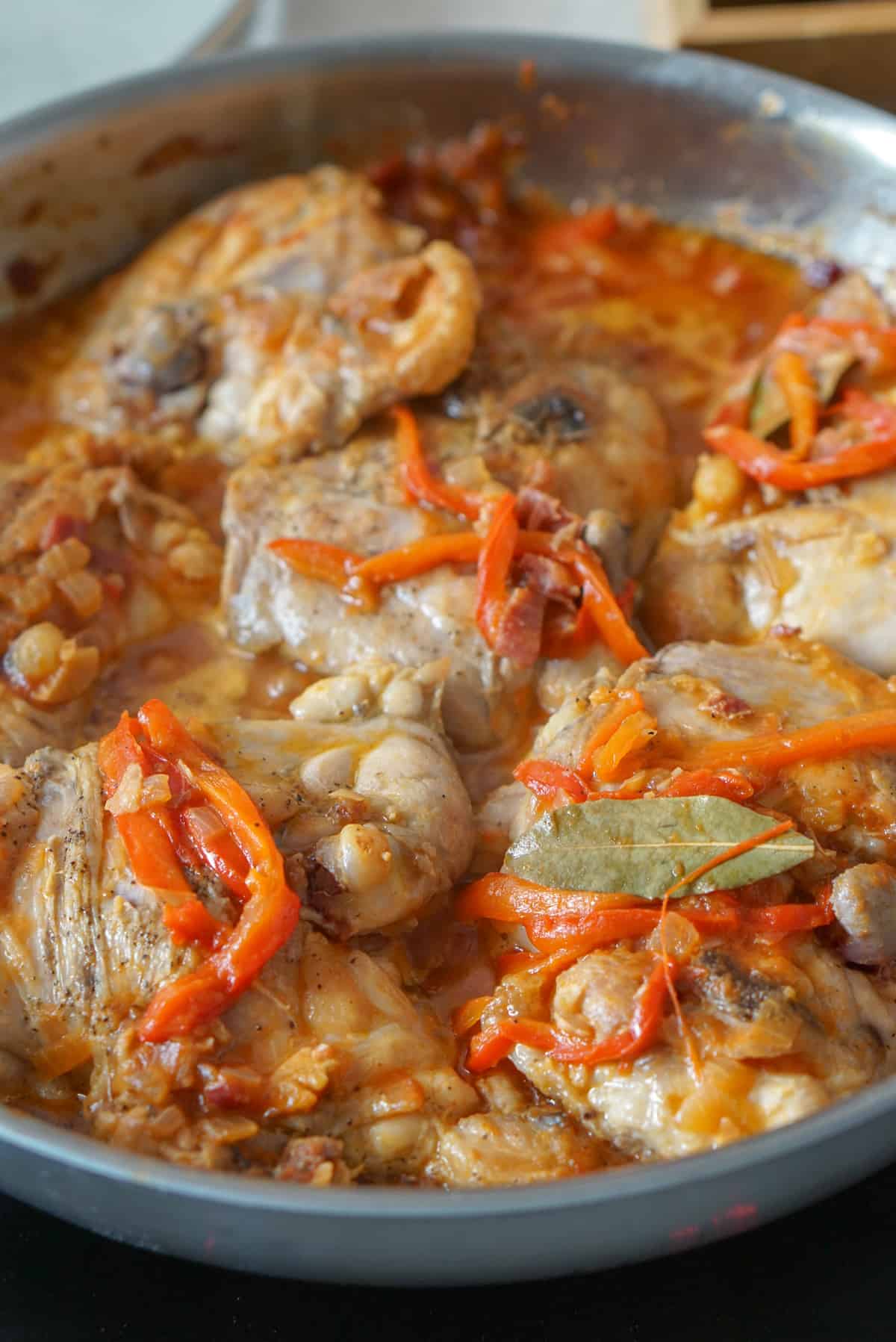
Sauces & Dips
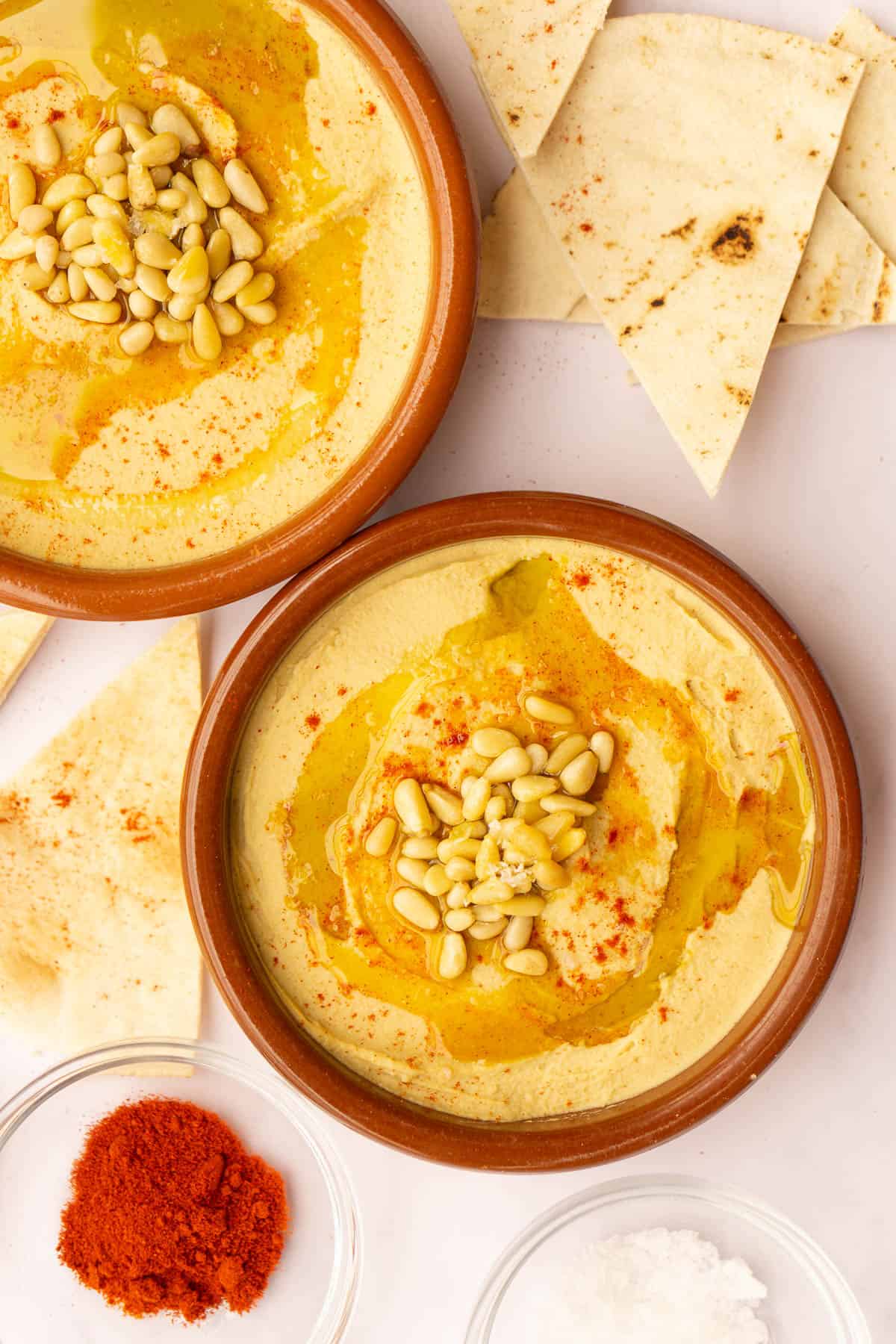
Desserts
- Lemon Olive Oil Cake
- Chocolate Olive Oil Cake
- Apple Olive Oil Cake
- Magdalenas (Spanish Muffins)
- Lemon Yogurt Cake

Mediterranean Diet in Spain FAQs
The Mediterranean diet is a common way of eating throughout southern Europe, including not only Spain, but also Italy, Greece, parts of France, and Portugal (even though it doesn't border the Mediterranean Sea). It's also typical of some Middle Eastern and North African countries like Morocco, Egypt, Lebanon, and Israel.
A typical breakfast in Spain is a piece of toasted whole-grain bread topped with extra virgin olive oil, fresh tomato, and occasionally cured ham—very Mediterranean diet-friendly! Other common breakfast items are muffins baked with olive oil, small sandwiches, and fruit.
Indeed they are! Fish and seafood are major staples of this way of eating, and nutrient-packed anchovies are a great way to add more protein and omega-3 fatty acids into your diet.
Most traditional Spanish bread comes in long loaves similar to French baguettes. It's often unrefined and made with whole grains, making it a great addition to the Mediterranean diet.
Hungry for more? Sign up for my free weekly newsletter and receive a new Spanish recipe once a week! Join today and get my FREE Spanish ingredient essentials guide!







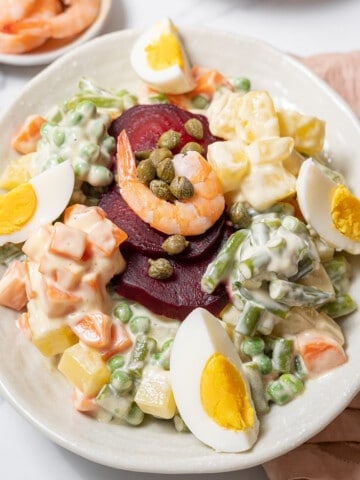
Hugh Gentry
Has anybody ever had good vegetables anywhere in Spain? Apart from raw broad beans it's mostly chips with everything, perhaps with a seared strip of capsicum if you're really lucky. If you do get veg they're often straight out of the freezer then boiled to death like school dinners. Spanish need to learn how to steam!
Lauren Aloise
It really depends where you are-- Spain has some of the most delicious vegetables I've ever tasted! But it's true that some of the standard restaurants overcook everything! I've had incredible vegetables like tomatoes, artichokes, roasted red peppers, carrot salad, eggplants, asparagus... anything in season!
Henry | @fotoeins
Who needs a stinkin' escalator ... if there's Spanish food waiting at the top. Seriously, people. Y una cerveza fría ... por'fa ...
renee
Hahah! This is hilarious! And spot on...
Frank Teixeira
Very creative post with good advise.
What is the sauce with the presa iberico?
I might add an eleventh commandment: eating small bites often throughout the day.